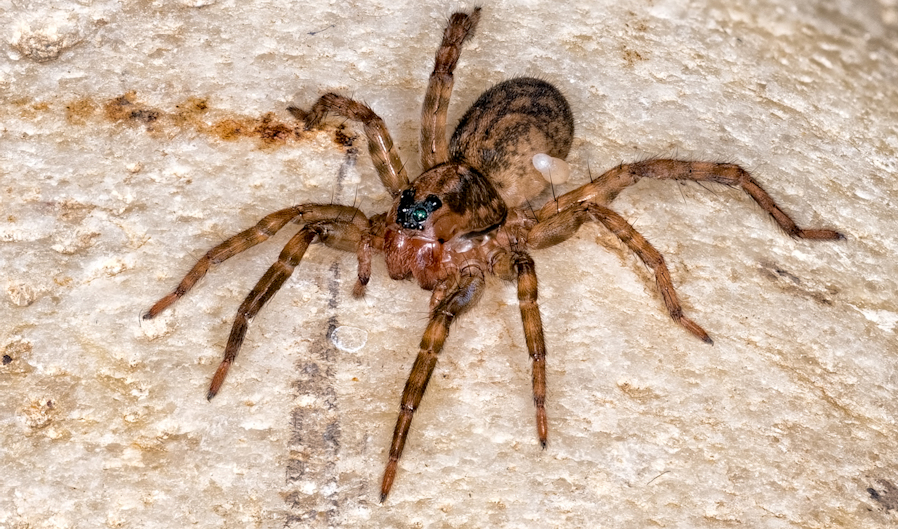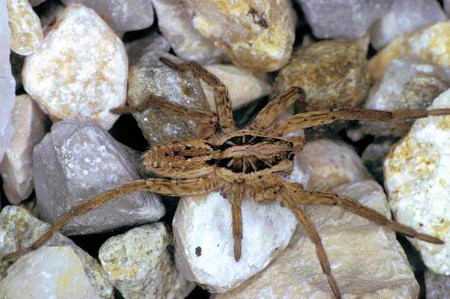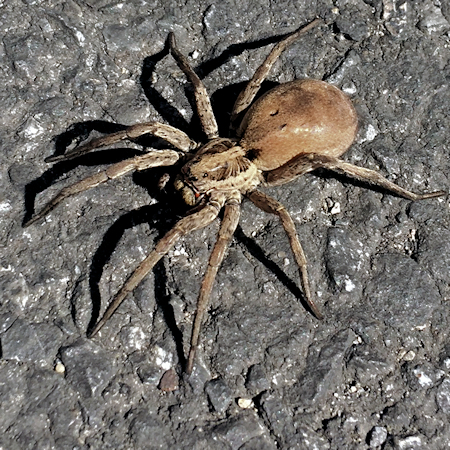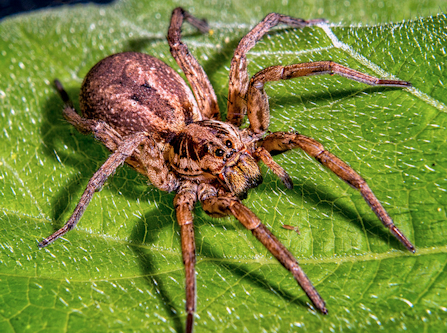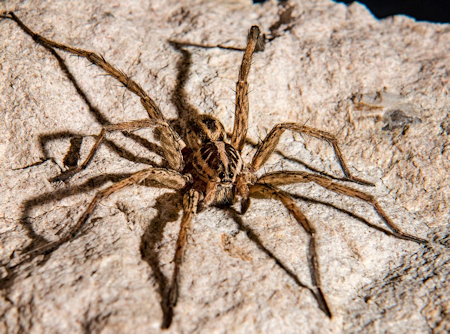Wolf spiders
Family Lycosidae
Home <------
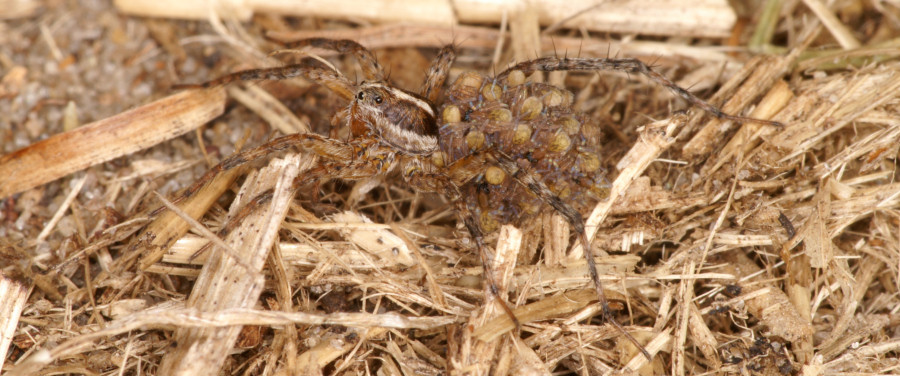
Wolfspider with yougsters attached to her abdomen. |
|
These spiders are real hunters and have excellent eyesight. They are
rather big and are easily spotted on places in the sun often at damp
places. If you spot spiders speeding away on the ground and several
spiders have white egg-sacs attached to their spinnerets at the back of
their body you can be sure you deal with wolf spiders. Their name "wolf
spider" is derived from the fact that people erroneously thought they
hunted in groups like wolves.
In Europe there are about 81 species described in eight genera.
The cephalothorax (head-breast part) is elongated and usually high and
narrowed in the front. They have eight eyes. Four small ones are located at
the lower part of the face. Immediately above these there are two large eyes
looking forward and father back there are also two big eyes that look
upward. In this way the spider can look in four directions and can perceive
moving insect at a distance of several inches. |
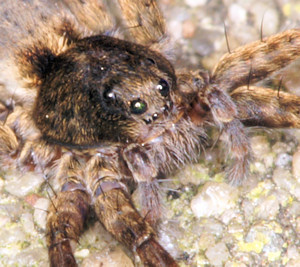 |
 |
The legs and chelicera (jaws) are robust. The spider vigorously attacks
her prey crushing it with her stout chelicera.
The spider lives in every variety of terrestrial habitats. They can even
been found on the water skating over it and even diving under the surface
catching small fish and insects. Some of these spider fish, by putting one
of their legs into the water. If a fish is attracted and wants to catch the
bait the spider catches it. |
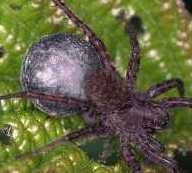 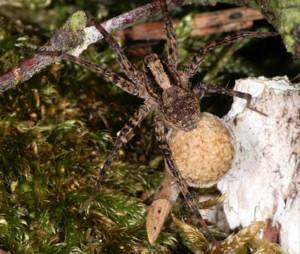
The majority of the genera carry their eggs in an egg-sac attached at the
back of their abdomen.Some genera (Arctosa, Trochosa and Alopecosa)
keep their eggs under the ground in web coated holes or tubes. The
youngsters crawl on top of the abdomen of the mother and stay there until
they change their skin for the first time. |
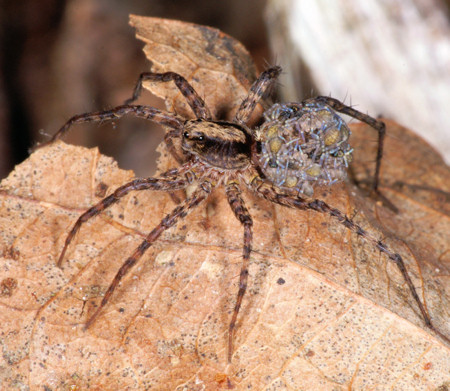 |
Mothers; Pardosa amentata and Pardosa
lugubris with egg sac |
and Pardosa lugubris with youngsters on her back. |
| |
|
The female spider is a creature with a variable temper.
Notorious for her rapacious activities, she displays solicitude for her eggs
and young that can scarcely be met by any other spider. Her egg sac,
attached to her spinnerets, is a precious thing she will defend with her
life. Her instinct is very powerful but she also can be easily fooled. When
her egg sac is changed for something artificial, like a piece of cork or a
wad of paper or cotton, she also will defend the artificial sac with her
life.
After two or three weeks, her young develop to a point where they can
leave the sac. The mother bite open the sac and within a few hours all the
young has climbed on the abdomen where they will stay until their first
change of skin. During that time the mother will engage her normal hunting
activities with her young tightly attached to her body. When the young are
brushed from her body they will crawl back very quickly. In the time the
young are attached at the body of their mother they do not eat. Their bodies
are supplied with enough food to live during this period. The youngsters do
drink water during their stay by drinking dewdrops in the morning. |
Genus Alopecosa
The 17 species living in Europe are larger than the genus Pardosa. The
cardiac spot on the abdomen is clearly visible.
The female keeps her egg sac in a burrow and periodically exposes the sac to
the sunlight.
Genus Arctosa
Nine species of Arctosa can be found in Europe.
The carapace (the hard shield covering the top of the cephalothorax)
usually lacks a definite median band.
Their legs are usually clearly spotted. Most species makes burrows in the
sand, moss or detritus.
The spiders are large (10 - 20 mm). |
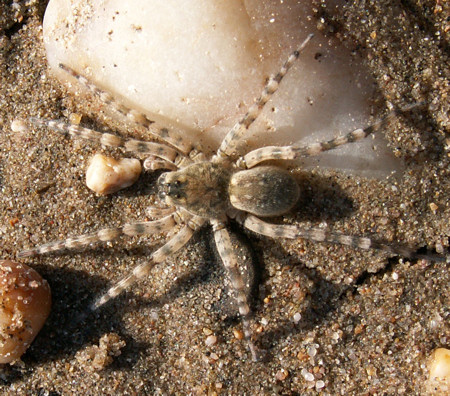 |
| |
Arctosa cinerea (Rijnoever Gelderland Millingen Nederland by Sjir
Renkens) |
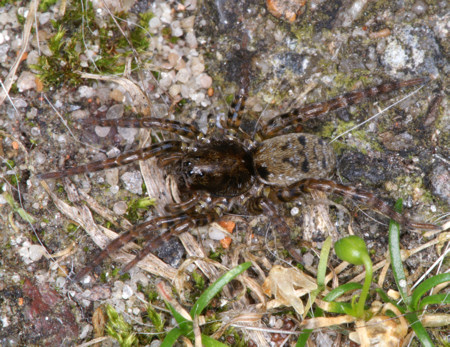 |
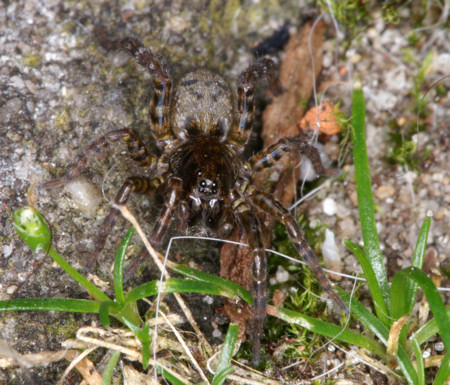 |
| Arctosa leopardus |
Arctosa leopardus |
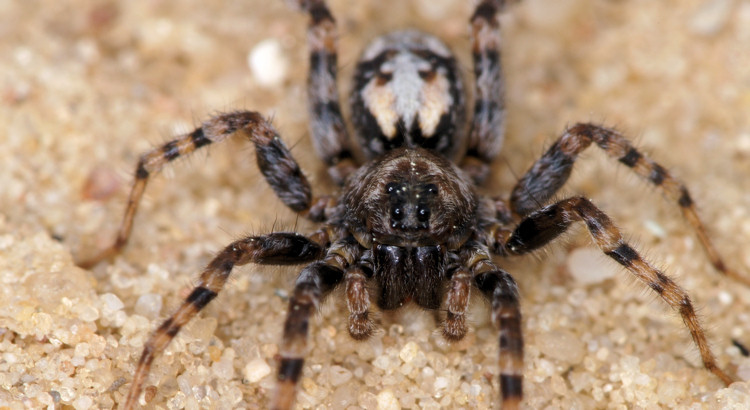 Arctosa
perita Arctosa
perita |
 |
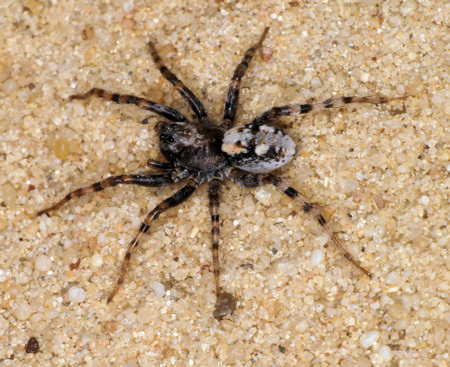 |
| Arctosa perita |
Arctosa perita |
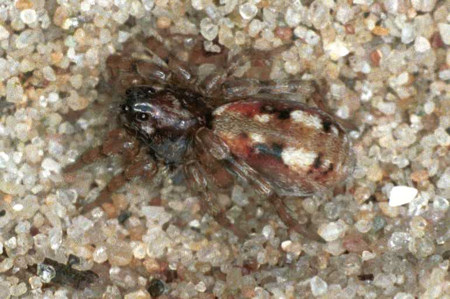
Arctosa perita |
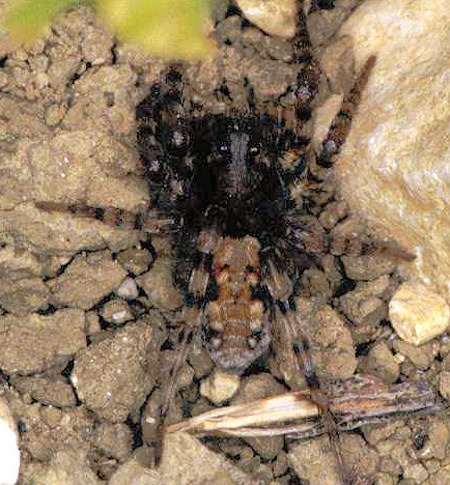
Arctosa ZZ362 (SW France) |
| |
Arctosa
villica photo by Guy Vanstraelen
jav61photography.com
(SE France) |
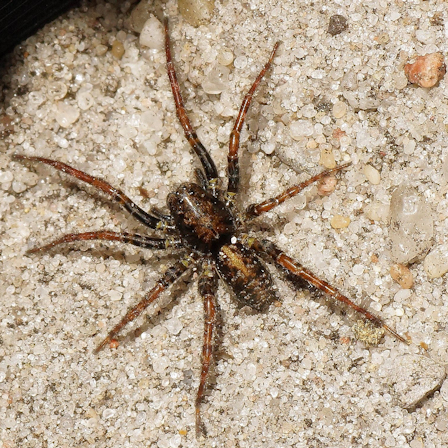 |
 |
Arctosa lutetiana
photo by Hans Jonkman |
Arctosa lutetiana photo by
Hans Jonkman |
Genus Aulonia
There is only one species in Europe. Its size is between 4 and 4.5 mm. It is
a dark coloured spider with remarkably light legs.
Both sexes are similar in appearance.
It makes a living tube in the ground end a smaal web on which she catches her
prey.
She lives between grass and moss amongst stones. The spider may be found
running actively in the sunshine.
Genus Hogna
Genus Hygrolycosa
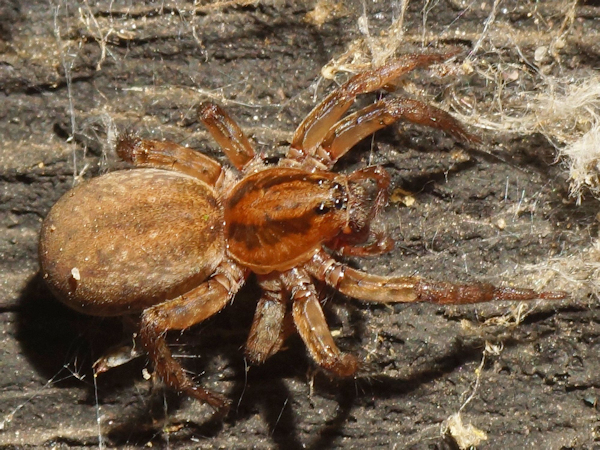
Hygrolycosa rubrofasciata (Hans Jonkman)
Genus Pardosa
This is the most abundant genus with 39 species. The Pardosa is found
running on the ground in sunny warm places.
When the weather conditions are poor they hide among the leaves, moss and
detritus.
In May and June the females can be seen with their egg sacs attaches to their
spinners.
After 2 or 3 weeks the sac is opened and the spiderlings crawl on top of the
abdomen of the mother where they travel with her for about a week.
A female may have two or three sacs a year, even after most males may have
died off by this time. Their size varies between 4 and 8 mm.
|
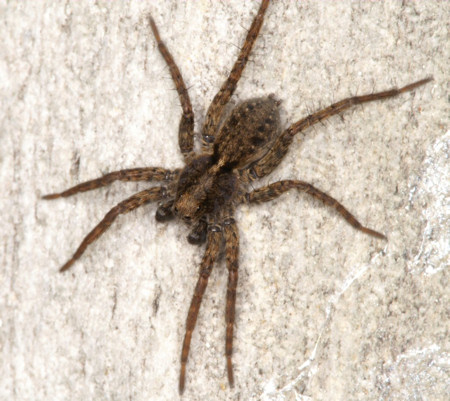
|
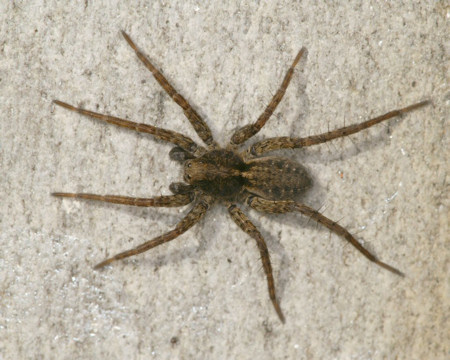
|
|
Pardosa amentata male
|
Pardosa amentata male
|
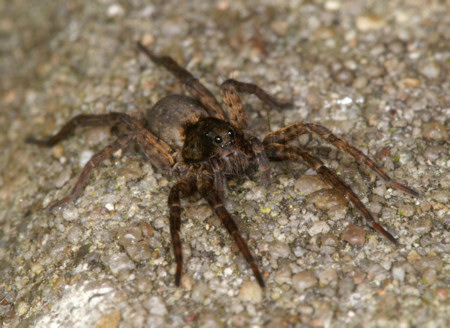 |
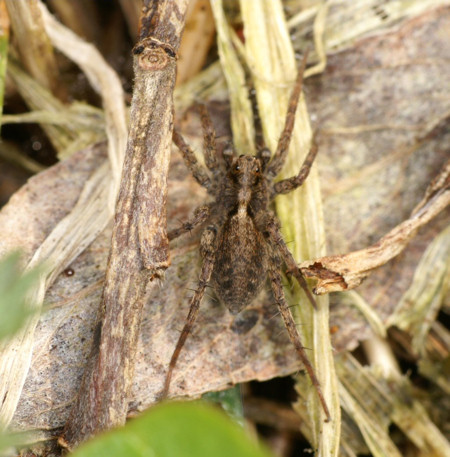 |
| Pardosa amentata female |
Pardosa amentata female |
|
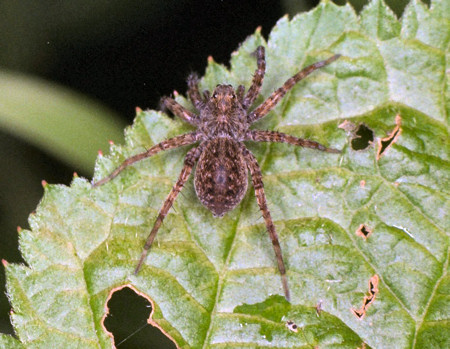
|
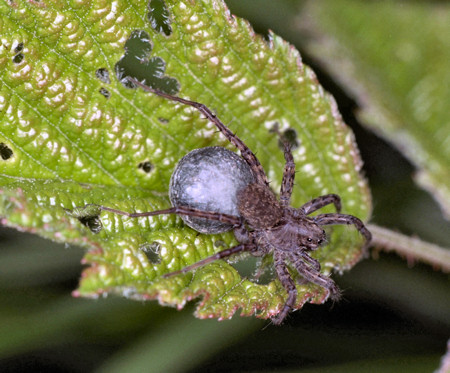
|
| Pardosa amentata female |
Pardosa amentata female
|
|

|

|
|
Pardosa monticola male
|
Pardosa monticola female
|
 |
 |
|
Pardosa monticola female
|
Pardosa monticola male |
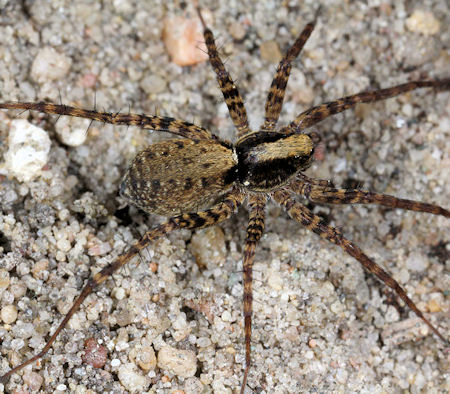 |
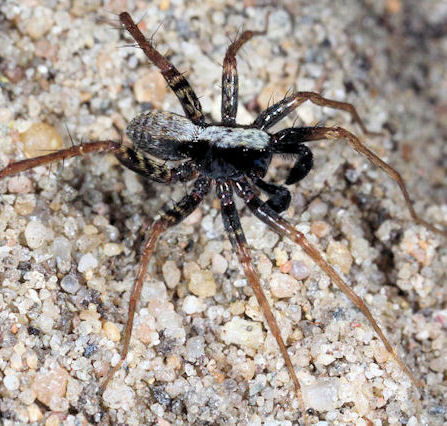 |
|
Pardosa lugubris female
|
Pardosa lugubris male |
|
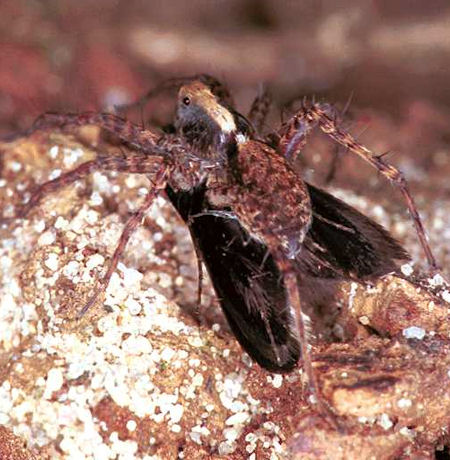
|
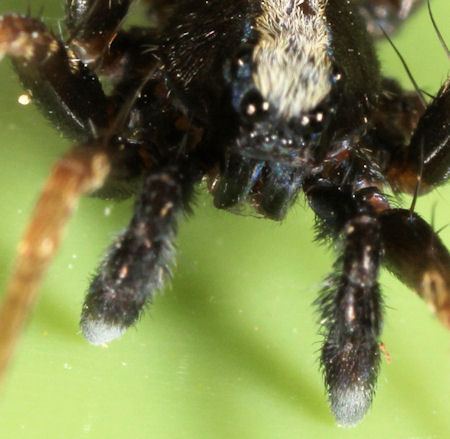
|
|
Pardosa lugubris
with a prey
|
Pardosa lugubris male detail of the palps |
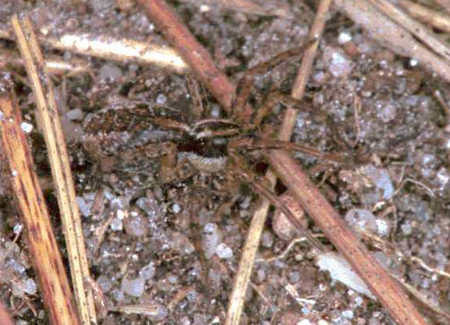 |
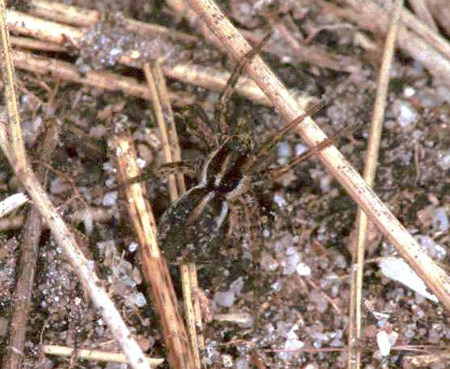 |
| Pardosa agrestis? |
Pardosa agrestis? |
|

|
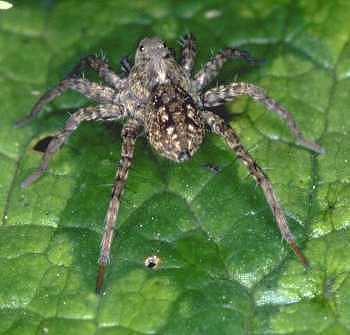
|
|
Pardosa prativaga
|
Pardosa prativaga
|
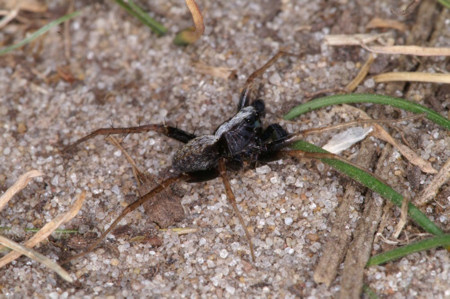 |
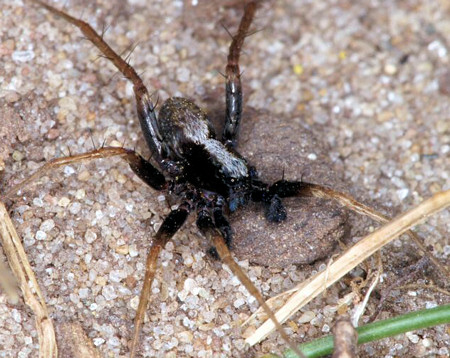 |
| Pardosa saltans male |
Pardosa saltans male |
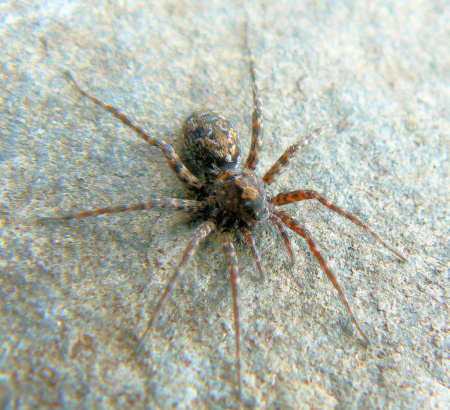 |
It's habitat is mostly around scree slopes on barren
mountains but also reported from mires with sedges and stony shores of lakes
in Sweden |
| Pardosa trailli, Finnmark county , Norway
(Picture by Camilla Brox) |
|
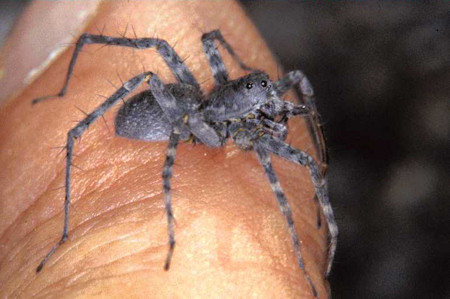 |
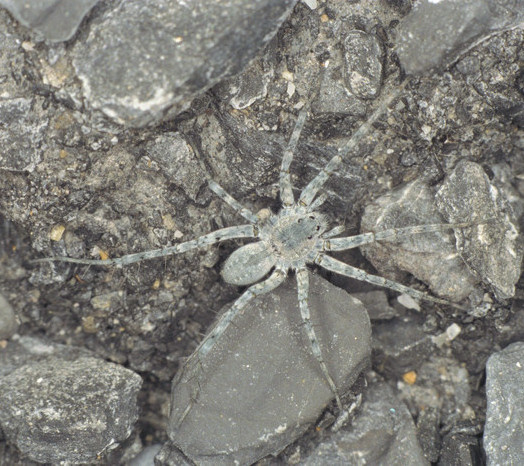 |
| Pardosa wagleri |
Pardosa wagleri |
Genus Pirata
Eight species of this beatiful small Lycosid occur in
Europe. Almost all species inhabit wet, marshy areas. They are adapted to
run across water.
They construct silk tubes leading from the surface of moss down towards the
water. Their size varies between 4 and 8 mm. |
 |
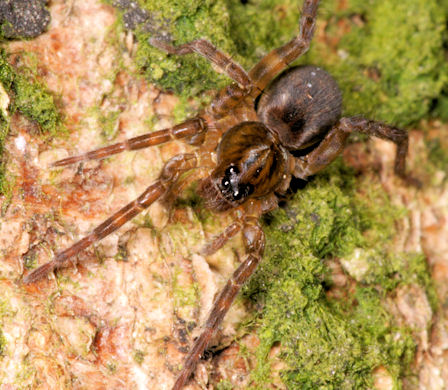 |
| Pirata latitans |
Pirata latitans |
 |
 |
| Pirata piraticus |
Pirata piraticus |
 |
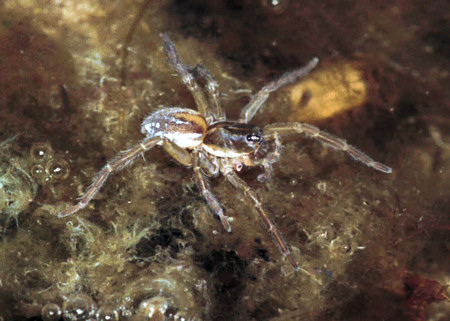 |
| Pirata piraticus |
Pirata piraticus |
 |
 |
| Pirata hygrophilus/latitans? |
Pirata hygrophilus/latitans? |
Genus Trochosa
Four species are known in Europe. They hunt at night and spent the day hidden
amongst moss and detritus.
The females spent most of the day with an egg sac in a burrow but may be
spotted during the dull daylight.
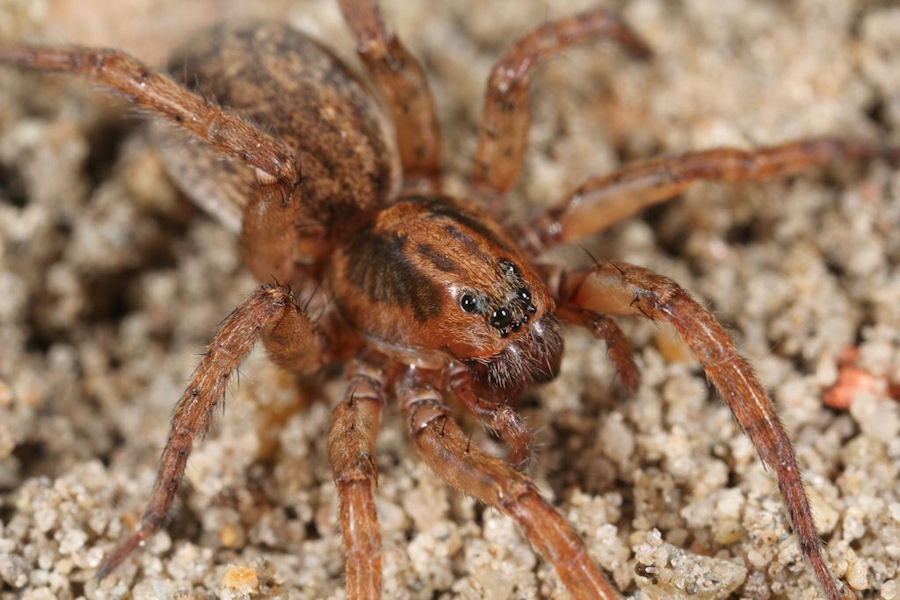 |
| Trochosa terricola |
 |
| Trochosa terricola |
 |
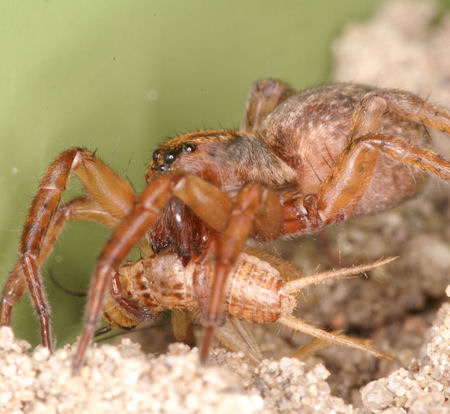 |
| Trochosa terricola epigyne |
Trochosa terricola with cricket |
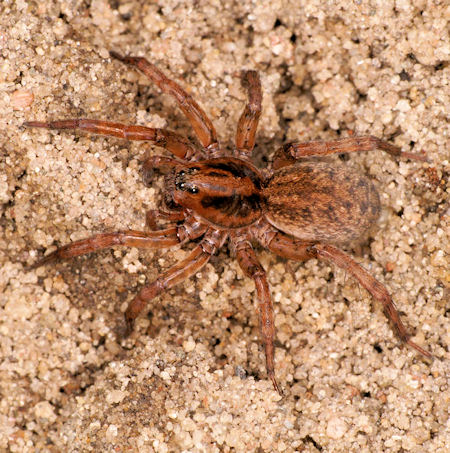 |
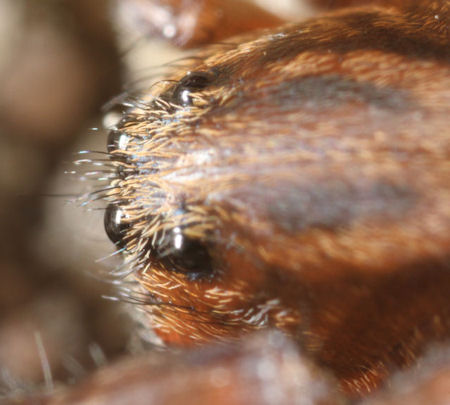 |
| Trochosa terricola |
Trochosa terricola |
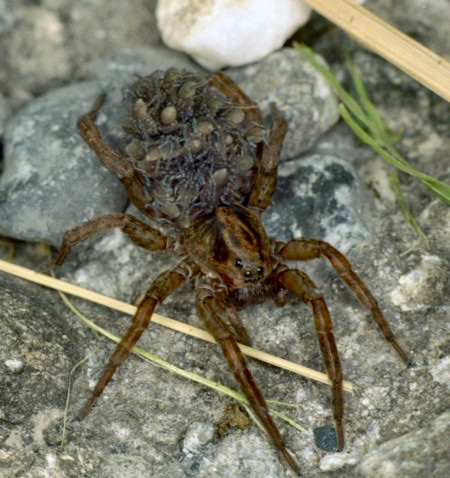 |
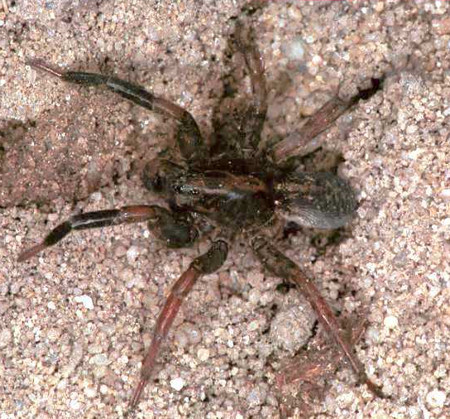 |
| Trochosa terricola with youngsters and egg sac. |
Trochosa terricola male |
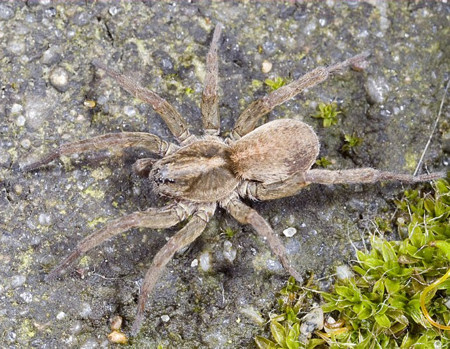 |
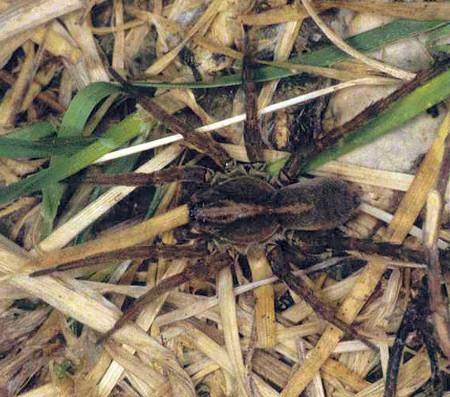 |
| Trochosa ruricola |
Trochosa ruricola |
Ed Nieuwenhuys, 23 march 2023
1 augustus 2019,
22 september 2018, 5
mei 2011, 10 maart
2010, 18 june 2007, October 29, 2000






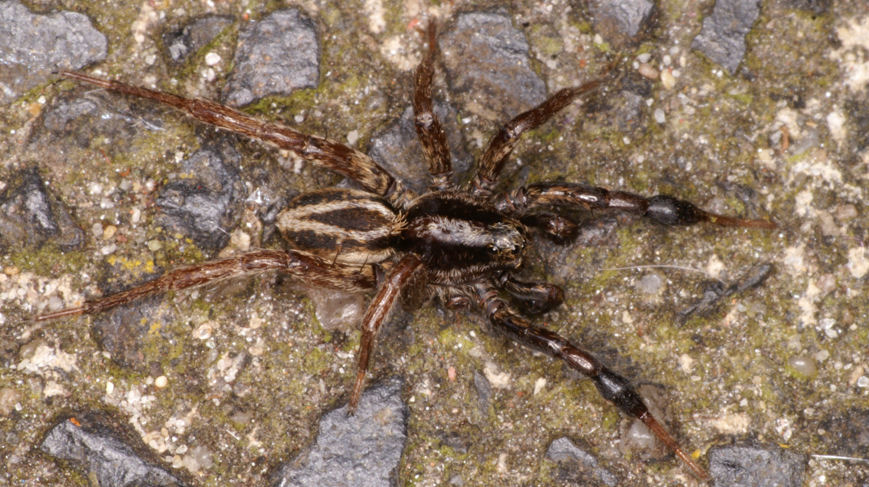
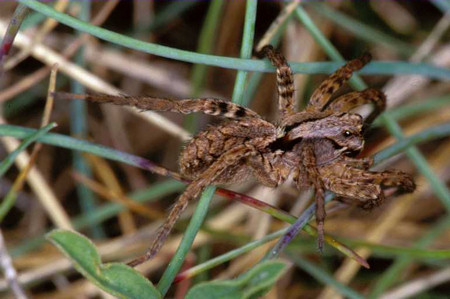

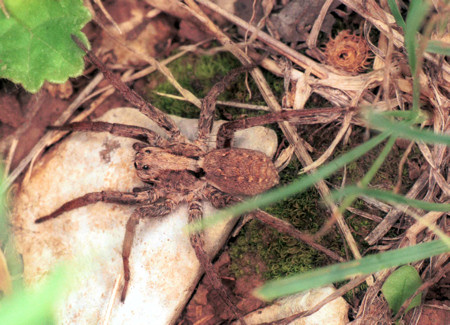
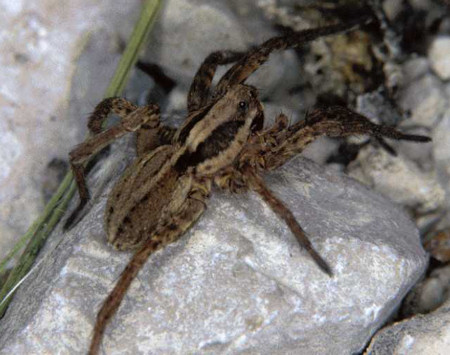
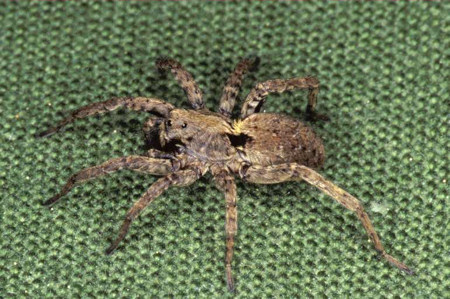
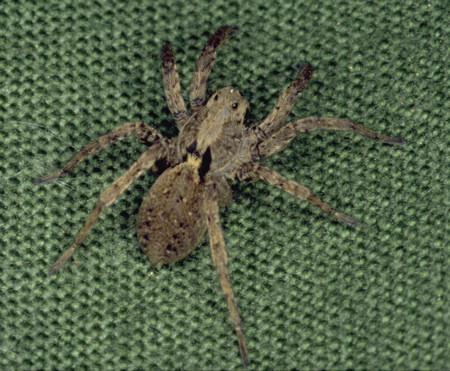





 Arctosa
perita
Arctosa
perita



